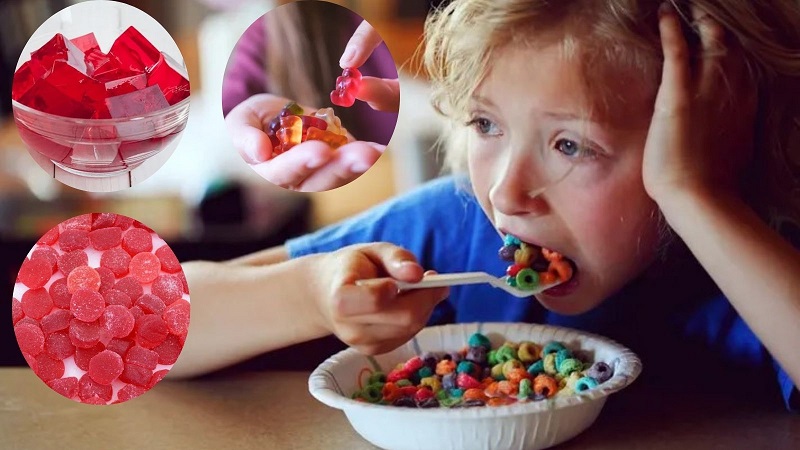The FDA has officially banned the use of the red dye, Red 3 (Erythrosine), in foods, dietary supplements, and drugs due to cancer concerns linked to its use in lab animals.
Manufacturers have until 2027 to comply with the ban.
This long-awaited decision aligns with global safety standards and prioritizes public health.
Content Highlights
- FDA bans Red 3 dye in food and drugs.
- Health concerns linked to potential cancer risk.
- Manufacturers have until January 2027 to comply.
- Red 3 was previously banned in cosmetics 35 years ago.
- Over 3,000 products contain the dye.
- Petitions from 24 organizations prompted the ban.

The U.S. Food and Drug Administration (FDA) has made a historic decision, banning the controversial red dye, Red 3 (Erythrosine), due to its potential cancer risks.
This decision, as reported by the Associated Press, marks a significant shift in food safety standards, as the FDA mandates food manufacturers to phase out the dye by January 2027 and drug makers by January 2028.
A Bold Move for Public Health
This pivotal action by the FDA is a bold step toward prioritizing public health.
“The FDA is taking action that will remove the authorization for the use of FD&C Red No. 3 in food and ingested drugs,” said Jim Jones, the FDA’s deputy commissioner for human foods.
The agency’s decision comes after mounting evidence showed that high levels of the dye caused cancer in laboratory rats.
While it’s important to note that these results do not reflect risks in humans, the FDA is still acting with caution, protecting consumers from any potential harm.
The History Behind the Ban
Red 3, a synthetic dye derived from petroleum, has long been a color additive used in foods and medications to achieve a vibrant cherry-red hue.
However, the Delaney Clause — a rule preventing the approval of any food additive that is known to cause cancer — has been the key driving force behind this ban.
Interestingly, Red 3 had already been removed from cosmetics nearly 35 years ago due to similar concerns, but its continued use in food and drugs had raised questions about inconsistent safety standards.
A Long Overdue Action
This decision was met with widespread approval from health experts and advocacy groups.
Dr. Peter Lurie, director of the Center for Science in the Public Interest, who led the petition for the ban, praised the FDA’s action as “long overdue.”
“This is a welcome, but long overdue, action from the FDA: removing the unsustainable double standard in which Red 3 was banned from lipstick but permitted in candy,”
Dr. Lurie said, highlighting the longstanding inconsistency in the treatment of this dye.
Dr. Marc Siegel, clinical professor at NYU Langone Health, also voiced his support, calling the ban “a long time coming.”
He noted that the link between high doses of Red 3 and cancer in lab rats had been known for over three decades. “It’s crucial we maintain consistency between what we put on our skin and what we ingest,” Siegel explained.
The Impact on Children and Public Health
The synthetic dye has been linked to more than just potential cancer risks. Experts, including Dr. Siegel, have pointed to the broader implications for children’s health.
The bright color of Red 3 has often been used in products targeted at children, encouraging the consumption of unhealthy, ultra-processed foods and raising concerns about its impact on behavior.
Studies have also associated Red 3 with behavioral issues in children, including ADHD.
With nearly 3,000 foods containing Red 3, this ban is expected to affect a wide range of products.
The Environmental Working Group’s Food Scores database shows just how pervasive this dye has been in many popular foods.
International Recognition and Global Impact
This bold step by the FDA is part of a growing global movement toward tighter regulation of food additives.
Red 3 is already banned or severely restricted in countries like Australia, Japan, and the European Union.
Dr. Siegel believes the FDA’s decision may have been influenced by these international standards, as well as by the incoming leadership of Robert F. Kennedy Jr. at the Department of Health and Human Services.
A Commitment to Safer, Healthier Food Choices
The National Confectioners Association, a group representing the food industry, has affirmed its commitment to adhering to the FDA’s new guidelines.
“Food safety is the number one priority for U.S. confectionery companies, and we will continue to follow and comply with FDA’s guidance and safety standards,” the association stated.
This monumental decision to remove Red 3 from foods and drugs signals a pivotal moment in consumer protection.
It reinforces the FDA’s commitment to prioritizing public health and addressing concerns that affect millions of people, especially children, across the nation.
As we look ahead to the full implementation of this ban by 2028, we can hope that the future of food safety will be one where our health comes first.